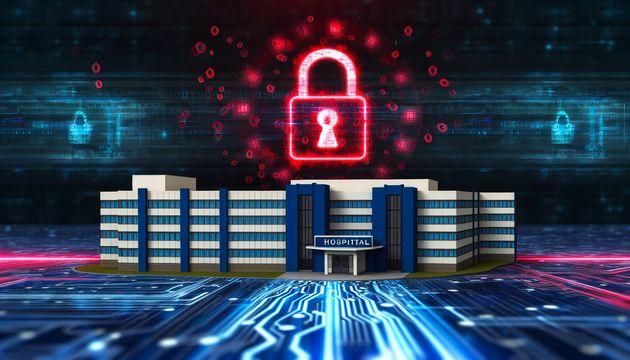
The Expanding Impact of the Landmark Admin Data Breach
In a digital landscape where data is as valuable as currency, the Landmark Admin data breach stands out as a significant event, affecting millions and highlighting the vulnerabilities in our cybersecurity defenses. Initially impacting over 800,000 individuals, the breach has now extended its reach to 1.6 million people, exposing sensitive personal information such as Social Security numbers and home addresses. This incident not only underscores the potential for identity theft and fraud but also highlights the challenges organizations face in assessing the full extent of cyber threats. The breach’s wide geographic impact, particularly in Texas, emphasizes the need for coordinated responses from both state and federal agencies (WFAA).
The Expanding Impact of Cybersecurity Breaches
Increased Scope of Affected Individuals
The Landmark Admin data breach initially reported to have affected over 800,000 individuals, has now expanded its impact to 1.6 million people. This significant increase highlights the evolving nature of cyber threats and the challenges organizations face in accurately assessing the full extent of breaches. The breach exposed sensitive personal information, including full names, home addresses, Social Security numbers, and other identification details, underscoring the potential for identity theft and fraud.
Geographic Distribution of Impact
The data breach affected individuals across the United States, with a notable concentration in Texas, where nearly 68,000 residents were impacted (WFAA). This geographic spread emphasizes the wide-reaching implications of cyber incidents, affecting not only local populations but also individuals nationwide. The breach’s national scope necessitates a coordinated response from both state and federal agencies to mitigate the risks and provide support to those affected.
Financial and Reputational Consequences
The financial implications of the Landmark Admin data breach are substantial. According to the IBM Cost of a Data Breach Report 2023, the average cost of a data breach reached $4.45 million per incident in 2023, with a 10% increase in 2024. These costs include immediate expenses related to breach notification, legal fees, and identity theft protection services, as well as long-term impacts such as reputational damage and loss of consumer trust. Landmark Admin’s provision of 12 months of identity theft protection and credit monitoring coverage is a direct response to these financial risks.
Organizational Response and Security Enhancements
In response to the breach, Landmark Admin has implemented stronger data encryption protocols and other IT security enhancements (Forbes). These measures include upgrading encryption methods and improving overall network security to prevent future attacks. The incident underscores the importance of robust cybersecurity measures, such as strong password policies, regular security audits, and employee training, to mitigate the risk of cyberattacks. Additionally, having an incident response plan is crucial for minimizing the impact of breaches, involving rapid detection, containment, eradication, and recovery processes.
Broader Trends in Cybersecurity Breaches
The Landmark Admin data breach is part of a broader trend of increasing cybersecurity incidents across various sectors. The SecurityMetrics Threat Intelligence Center reported a significant uptick in zero-day breaches globally in 2024, with 768 vulnerabilities actively exploited by threat actors. This represents a 20% increase from the previous year, highlighting the growing sophistication and frequency of cyberattacks. The trend emphasizes the need for continuous monitoring and adaptation of cybersecurity strategies to address emerging threats.
Legal and Regulatory Implications
The Landmark Admin data breach has legal and regulatory implications, as organizations must adhere to data protection laws and regulations. The breach notification process, as outlined by Landmark Admin, involves notifying affected individuals by mail and providing a dedicated helpline for concerns and questions (Bleeping Computer). Compliance with legal requirements, such as the General Data Protection Regulation (GDPR) and the California Consumer Privacy Act (CCPA), is essential to avoid penalties and maintain consumer trust.
The Role of Third-Party Vendors
As a third-party administrator (TPA) handling policy accounting, regulatory reporting, and IT systems for major insurers, Landmark Admin’s breach highlights the risks associated with outsourcing critical functions to external vendors. Organizations must ensure that third-party vendors adhere to stringent cybersecurity standards and conduct regular audits to assess their security posture. The breach serves as a reminder of the importance of vendor risk management in safeguarding sensitive data.
Future Directions in Cybersecurity
Looking ahead, organizations must prioritize cybersecurity as a strategic imperative. This includes investing in advanced technologies, such as artificial intelligence and machine learning, to enhance threat detection and response capabilities. Additionally, fostering a culture of cybersecurity awareness among employees and stakeholders is crucial for reducing the likelihood of human error, which is often a contributing factor in data breaches. As cyber threats continue to evolve, organizations must remain vigilant and proactive in their cybersecurity efforts to protect sensitive information and maintain consumer trust.
Final Thoughts
The Landmark Admin data breach serves as a critical case study in the evolving landscape of cybersecurity threats. With the financial implications reaching millions, as noted in the IBM Cost of a Data Breach Report 2023, organizations are reminded of the importance of robust security measures and the need for continuous adaptation to emerging threats. The breach also highlights the risks associated with third-party vendors and the necessity of stringent cybersecurity standards. As cyber threats continue to grow in sophistication, the integration of advanced technologies like AI and machine learning becomes imperative for enhancing threat detection and response capabilities. Ultimately, fostering a culture of cybersecurity awareness and maintaining vigilant, proactive strategies are essential for protecting sensitive information and sustaining consumer trust.
References
- Bleeping Computer. (2025). Landmark Admin data breach impact now reaches 1.6 million people. https://www.bleepingcomputer.com/news/security/landmark-admin-data-breach-impact-now-reaches-16-million-people/
- WFAA. (2025). Data breach at Landmark Admin, Texas-based insurance servicer, affects 800,000. https://www.wfaa.com/article/news/local/texas/data-breach-at-landmark-admin-texas-based-insurance-servicer-affects-800000/287-28adfbf9-3b19-4445-9cad-40d694002cb5
- Forbes. (2024). Landmark Admin data breach impacts 800,000 insurance customers. https://www.forbes.com/sites/larsdaniel/2024/11/02/landmark-admin-data-breach-impacts-800000-insurance-customers/
- SecurityMetrics. (2025). 2025 forensic predictions. https://www.securitymetrics.com/blog/2025-forensic-predictions



